REPORTEROS

An inclusive, communicative Spanish program that speaks to today’s young learners



An inclusive, communicative Spanish program that speaks to today’s young learners



soy
del

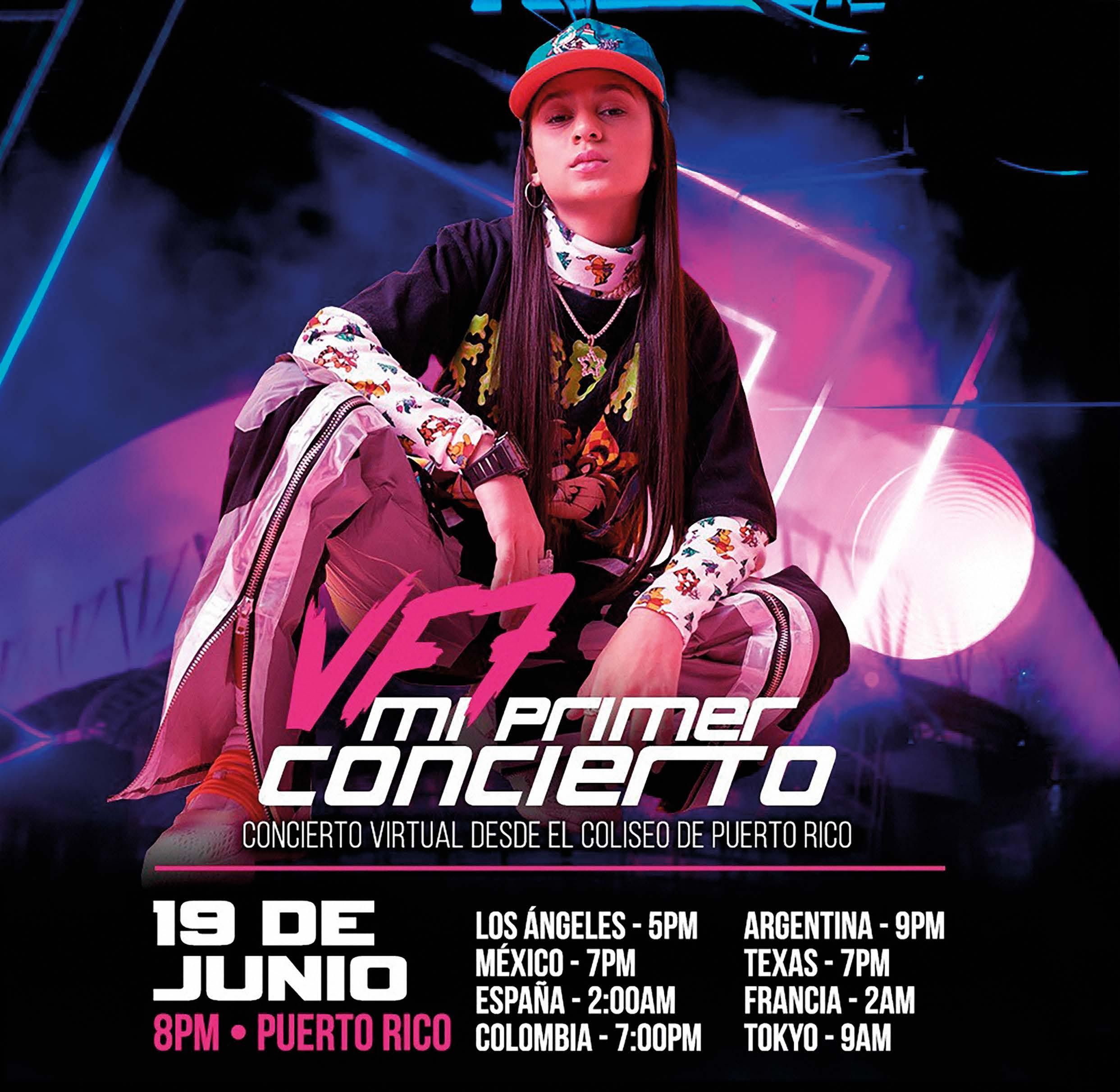

Boricua significa “puertorriqueño/a”. Viene de (It comes from) Borinquén, el nombre de Puerto Rico antes de la llegada (before the arrival) de los españoles.
Borinquén es un nombre taíno; los taínos son los habitantes nativos de la isla.
Name groups of native peoples in your country.
Sebastián

I can express likes and dislikes.


A. Look at the pictures. What activities do you like to do?






B. Listen to Sebastián. ¿Qué le gusta hacer a Sebastián? ¿Qué no le gusta hacer? What does Sebastián like to
doesn’t he like
C. Listen again. How does Sebastián express his likes and dislikes? search

4
A. Ask three people in your class if they like the activities on the previous page.
Say if you agree or not. Make a note of their answers.
• ¿Te gusta bailar?
• Sí.
• A mí también. / A mí no
B. Read these sentences.
search
Why do we use me and nos in each one?
A mí me gusta bailar.
A Sacha y a mí nos gusta bailar.
C. Share things you have in common with the other students.
A Jeremy y a mí nos gusta bailar.
5
Write four sentences explaining what you like and don’t like to do.
Use a dictionary if necessary.
En Puerto Rico el deporte rey1 es el béisbol. Muchos peloteros2 puertorriqueños están3 en la MLB de los Estados Unidos y cuatro están en el Salón de la Fama: Roberto Clemente, Orlando Cepeda, Roberto Alomar e Iván Rodríguez. El fútbol, el baloncesto4 y el boxeo5 también son deportes populares en Puerto Rico.
GUSTAR + INFINITIVE
Me gusta estudiar.
No me gusta estudiar.
A mí me gusta
A ti te gusta
A él / ella, usted le gusta
A nosotros/as nos gusta
A vosotros/as os gusta
A ellos/as, ustedes les gusta
AGREEMENT / DISAGREEMENT
• Me gusta estudiar.
• A mí también.
• A mí no.
• No me gusta leer
• A mí tampoco
• A mí sí
GRAMÁTICA p. 88
What
COMPARACIÓN CULTURAL What is /

Edwin Díaz, pelotero de los Mets
country?

I can express music preferences.
A. ¿Te gusta la música? ¿Cuáles son tus artistas favoritos?
B. Read the interviews.
Find all the sentences where the verb gustar is used.

When do we use the form gusta
do we use the form gustan
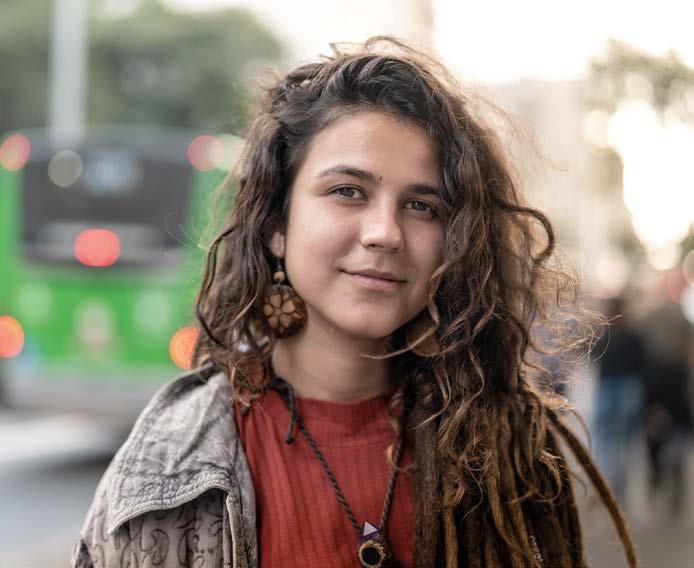
1. ¿Qué estilos de música te gustan?
Me gusta el rock.
2. ¿Tocas un instrumento?
Sí, toco la batería.
3. ¿Cuáles son tus artistas favoritos?
Me gustan mucho las bandas como Balún, Buscabulla y Niño Planeta.
1. ¿Qué estilos de música te gustan?
A mí me gustan mucho el jazz y la música clásica.
2. ¿Tocas un instrumento?
Sí, toco la guitarra y el piano.
3. ¿Cuáles son tus artistas favoritos?
Me gusta mucho Miles Davis. Y también compositores como Bach y Mozart.
1. ¿Qué estilos de música te gustan?
El reguetón y la salsa, básicamente.
2. ¿Tocas un instrumento?
No, pero canto en una banda de salsa.
3. ¿Cuáles son tus artistas favoritos?
Me gustan los boricuas: los clásicos como Héctor Lavoe y los actuales, como Bad Bunny.
C. Answer the questions.
1. ¿A quién le gusta la música clásica?
2. ¿Quiénes (who) tocan un instrumento musical?
3. ¿A quién le gusta el reguetón?
4. ¿A quién le gustan los artistas clásicos puertorriqueños?

D. Whose musical taste is similar to yours?
MI GRAMÁTICA
GUSTAR + NOUN
Me gusta el pop.
Me gustan las bandas de rock.
QUANTIFIERS (1): MUCHO
Me gusta mucho.
GRAMÁTICA pp. 88-89

What kind of music do your classmates like?
1. Ask your partner the three questions from the interview.
2. React to your partner’s answers using A mí también and A mí no.
3. Share with the class what your partner likes.

A. Listen to Sebastián talking about his music preferences. Say what genres he likes and doesn’t like.
B. Present your music preferences.
A mí me gustan diferentes estilos de música. Por ejemplo, me gusta el…
Puerto Rico es un centro de artistas con éxito1 global. En Nueva York, en la década de 1960, músicos de origen puertorriqueño y cubano fusionan2 ritmos caribeños con el jazz y crean la salsa. Tito Puente y Héctor Lavoe son clásicos de la salsa. Muchos cantantes latinos actuales tienen influencias de este estilo.
El reguetón, una fusión entre el reggae y el hip hop, es de origen puertorriqueño. Daddy Yankee, Ivy Queen y Bad Bunny son artistas puertorriqueños de reguetón.
la banda
cantar una canción to sing a song el / la compositor/a composer tocar (el piano) to play (the piano)

LOS INSTRUMENTOS
la batería drums la guitarra el piano
LOS ESTILOS el jazz el hip hop la música clásica el pop el reggae el reguetón el rock la salsa
A. ¿Qué dos estilos
COMPARACIÓN
I can describe characteristics and personality traits of animals and pets.
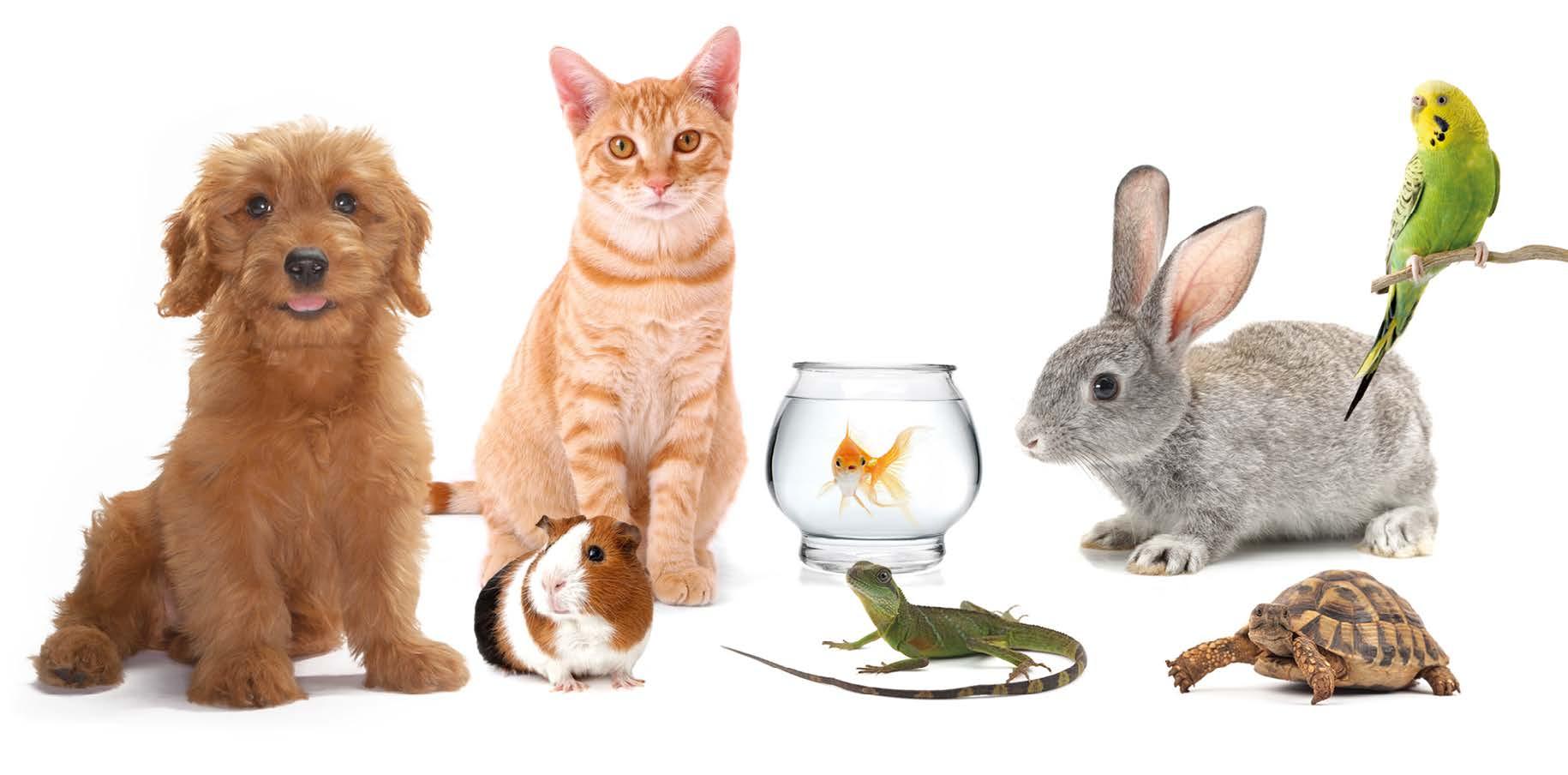
A. Look at the picture. ¿Qué mascotas te gustan?
Discuss in small groups.
A mí me gustan las cobayas. ¿Y a ustedes?
B. Let’s find out la mascota favorita de la clase.
1. Two students ask the class: ¿A quién le gustan los perros?, ¿A quién le gustan los gatos?, etc.
2. Two other students keep track of the answers on the board.
3. ¿Cuál (what) es la mascota favorita de la clase?
La mascota favorita es el / la…
Los animales más representativos de Puerto Rico son el manatí, un mamífero marino que vive en las costas del Caribe y también del Golfo de México, y el coquí, una rana1 que solo2 existe en Puerto Rico.

1 frog 2 only
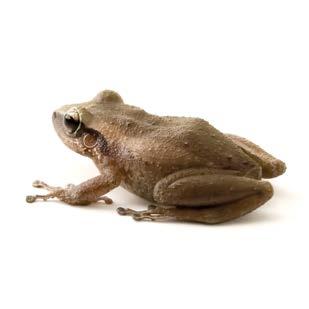
A. ¿Dónde vive el manatí? ¿Qué es el coquí?
B. Research information about an animal that only exists in your country. ¿Cómo se llama? ¿Dónde vive?

Me gustan mucho los gatos porque son independientes y divertidos. La gente dice que1 son distantes, pero yo creo2 que son muy cariñosos.
No me gustan los lagartos. Son feos y un poco aburridos. Y no son cariñosos.
Mi animal favorito es la tortuga. En mi familia tenemos dos.

Me gustan porque son tranquilas y muy bonitas.
Son un poco lentas, ¡pero yo también!

No me gustan los caballos porque son nerviosos y muy grandes.


El perro es bonito.
La tortuga es bonita
El gato es inteligente
La gata es inteligente.
Los perros son bonitos
Las tortugas son bonitas
Los gatos son inteligentes
Las gatas son inteligentes
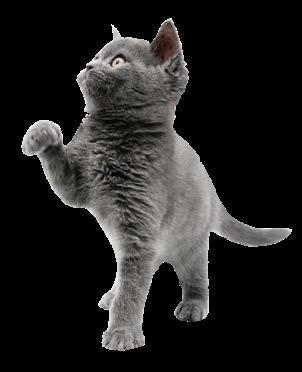

Son muy inteligentes.
They are very intelligent.
Son un poco feas.
They are a little ugly.
GRAMÁTICA pp. 89-90

search
Lee el texto
B. Read the text about La Borinqueña. Answer the questions below.
Marisol Ríos De La Luz es una muchacha de Nueva York. Tiene diecinueve años. Es afropuertorriqueña.
A Marisol le gusta mucho hacer deporte. Marisol estudia en la universidad en Puerto Rico.
En Puerto Rico se convierte1 en una superheroína con superpoderes: La Borinqueña. Su objetivo es proteger el medioambiente2
La Borinqueña es una muchacha inteligente, leal y trabajadora. También es abierta, valiente y muy patriota.
El uniforme de La Borinqueña representa los colores de la bandera de Puerto Rico. La Borinqueña es un símbolo del orgullo3 de ser de Puerto Rico.
La mejor amiga de Marisol es Lauren “La La” Liu. Es de origen chino y dominicano. Lauren es honesta, valiente y leal.
1 (she) becomes 2 to protect the environment 3 pride
LA PERSONALIDAD (2) abierto / abie
1. ¿De dónde es Marisol? 4. ¿Cuál es la ocupación de Marisol?
2. ¿Cuántos años tiene? 5. ¿Quién es La Borinqueña y cuál es su objetivo?
3. ¿Qué hace Marisol en su tiempo libre? 6. ¿Cómo es La Borinqueña? ¿Y Lauren?
C. Read this sentence from the text. Do the adjectives describing personality go before or after the noun? Is it different in English?
La Borinqueña es una muchacha inteligente, leal y trabajadora.
Después de leer
D. Write a short paragraph to describe the personality of your favorite comic book character or other fictional character.
Listen to Sebastián interviewing his friend Gabriela. ¿Cómo es un buen amigo o una buena amiga para Gabriela?
Para Gabriela, un buen amigo o una buena amiga es una persona…
es también el nombre del himno de Puerto Rico.
Borinqueña
other

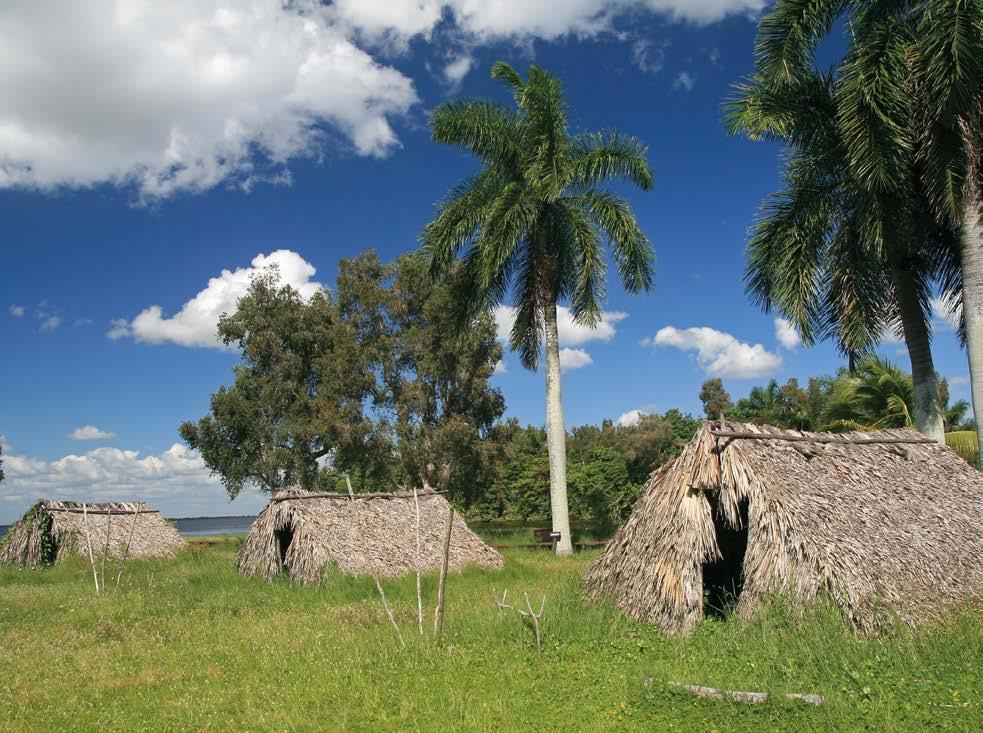

El Caribe es la región de los países que tienen costa en el Mar Caribe. Muchos países son islas: Bahamas, Cuba, Jamaica, Puerto Rico…
Cuando llegan los españoles en 1492, principalmente dos pueblos viven en las islas del Caribe: los taínos y los caribes.
Puerto Rico viven los taínos. Viven de1 la agricultura, la caza2 y la pesca
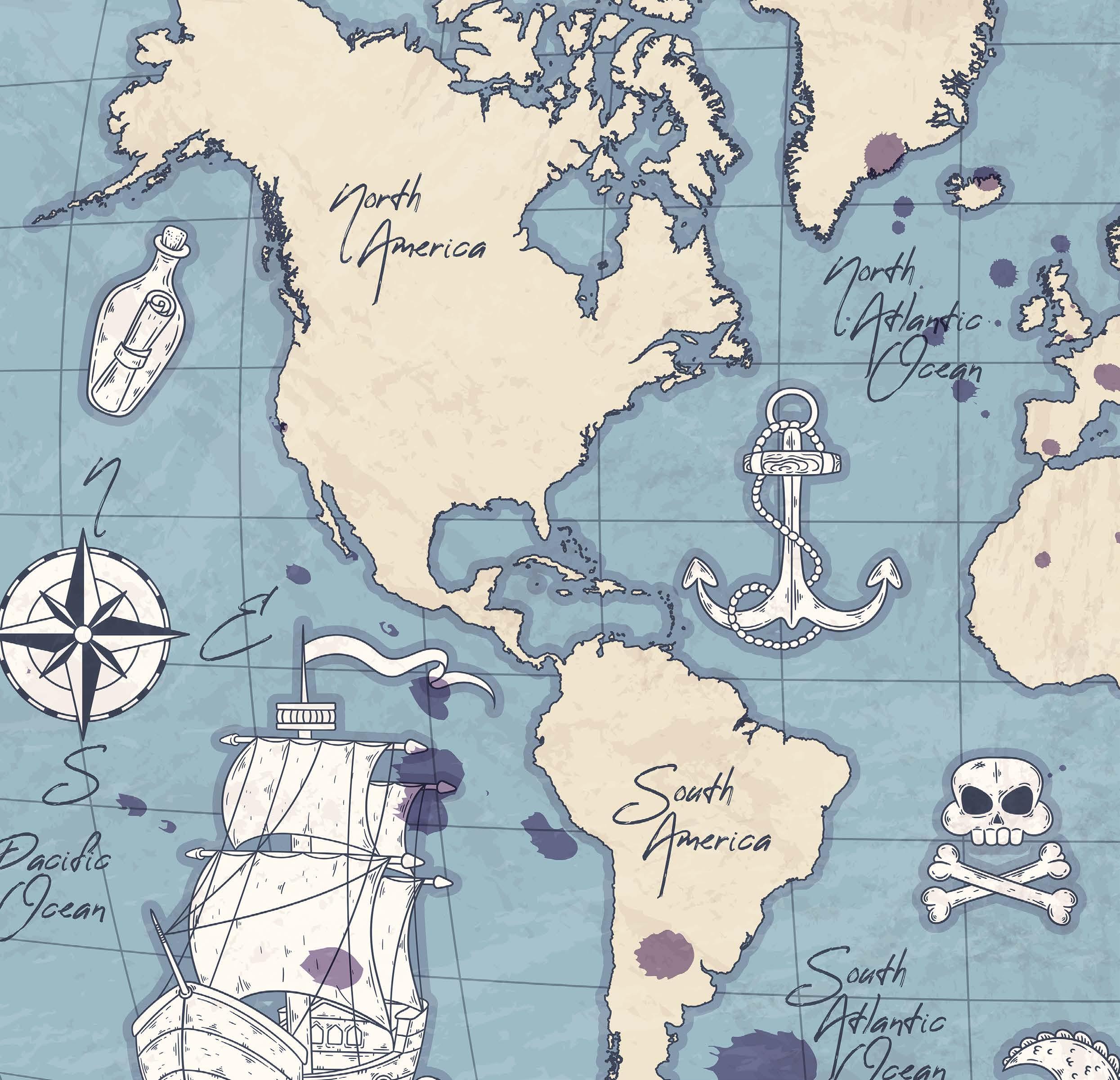
La influencia de los taínos en la cultura de Puerto Rico es muy importante.

Los taínos llaman Boriquén a la isla de Puerto Rico. Hoy, los puertorriqueños se llaman también boricuas.
La yuca, la batata, la piña y la papaya son de origen taíno.
Watch a video about
1. Write a brief article about the origins of an element of your culture: a dish, a word, a tradition...
2. Look for some pictures to illustrate it.
Los famosos vejigantes, máscaras de carnaval típicas de Puerto Rico, son de origen taíno también.


El español tiene muchas palabras taínas como barbacoa, canoa, hamaca, huracán o iguana, que también existen en inglés y otros idiomas.

Los puertorriqueños de hoy tienen orígenes taínos, europeos y africanos. Los puertorriqueños están muy orgullosos4 de su diversidad.
4 (they) are very proud
Write short sentences and use the texts in this unit as a guide for your writing.
• Gustar (to like) is used to express likes and dislikes.
Me gusta la salsa. I like salsa.
• Mainly we use two forms: gusta + infinitive verbs and singular nouns gustan + plural nouns
• Gustar is preceded by the following pronouns.
(A mí) me
(A ti) te (A él / ella, usted) le (A nosotros / nosotras) nos (A vosotros / vosotras) os (A ellos / ellas, ustedes) les
+gusta
bailar la salsa
infinitive noun: singular +gustan las tortugasnoun: plural
Note that gusta and gustan match what is liked, not who likes it. The literal translations in English is “it pleases me.”
• We use a + noun or pronoun (mí, ti, etc.) to clarify or emphasize who likes something. ¿A John le gusta bailar? ¿A ti te gusta bailar? Does John like dancing? Do you like dancing?
• When somebody expresses likes and dislikes, you can use también, tampoco, sí, and no to express agreement and disagreement.
A mí me gustan los animales. A mí no me gustan los animales.
A mí también.
do I.
mí no
don’t.
A mí tampoco
A mí sí.
do.
Complete the sentences using gusta or gustan.
a. A mis amigos les … los animales.
Nos … mucho los gatos.
Me la música caribeña.
Me … bailar.
A Sandra y a Pablo les … tocar la guitarra.
¿Te las personas independientes?
like
using A mí también
WHEN DO WE USE THEM?
• We use quantifiers to accentuate or limit the meanings of words.
WHAT FORMS DO THEY HAVE?
• In this unit we will focus on muy (very), un poco (a little) and mucho (very much)

• When quantifiers refer to an adjective, we place them before the adjective.
• When they refer to a verb, we place them after the verb.
es muy bonito/a ++ me gusta(n) mucho ++ es un poco aburrido/a --
Mi perro es muy simpático.
Me gusta mucho cantar. My dog is very nice. I like singing very much.
Mi perro es un poco nervioso
Me gustan mucho los gatos. My dog is a little nervous. I like cats very much.
Choose the appropriate quantifier for each sentence.
a. Spider-Man es muy / mucho ágil. b. Chris Rock es mucho / muy divertido.
c. Sonia es un poco / muy inteligente. d. Los peces son muy / mucho independientes.
e. Las tortugas son mucho / muy lentas.
Me gusta muy / mucho bailar.
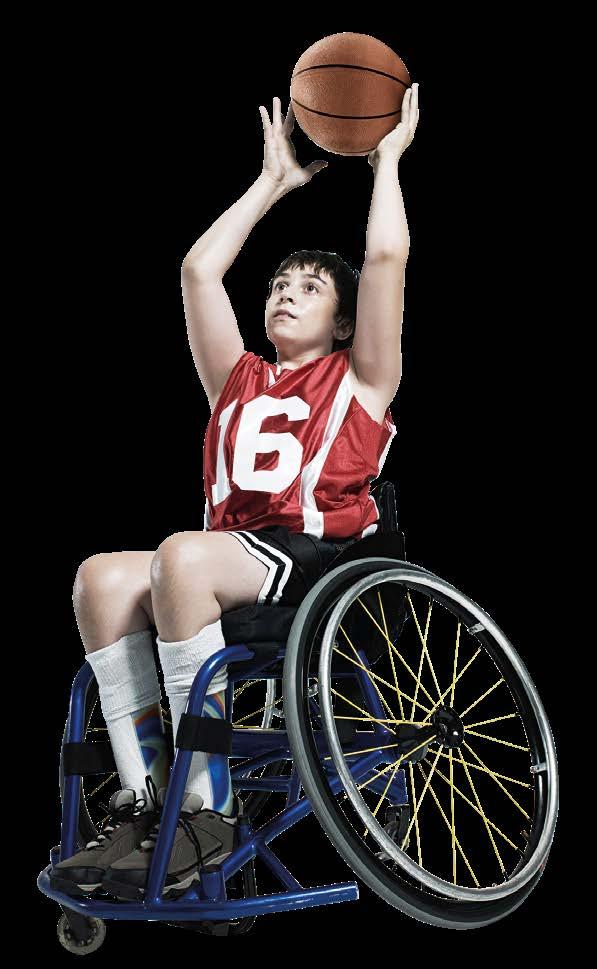
Los elefantes son muy / mucho grandes. h. • ¿A Jenny le gustan las cobayas?
• Sí, le gustan muy / mucho
• Adjectives are the words we use to describe nouns. In Spanish, they are normally placed after the noun.
Es un muchacho tímido He is a shy boy
noun nounadjective adjective
search Where do you usually place adjectives in English: before or after the noun?
• In Spanish, adjectives always agree in gender and number with the nouns or pronouns they describe.
Tengo una tortuga pequeña. I have a small turtle
Tengo dos perros grandes. I have two big dogs
search In English, do you pluralize adjectives?
-o -a el muchacho simpático la muchacha simpática -e -e el muchacho valiente la muchacha valiente -or -ora el muchacho trabajador la muchacha trabajadora consonant consonant el muchacho ágil la muchacha ágil
vowel + -s el perro tranquilo el perro inteligente los perros tranquilos los perros inteligentes
consonant + -es el perro ágil los perros ágiles
We use the masculine plural form when we refer to both a masculine and a feminine noun.
Guillermo es tímido Gabriela es tímida
Guillermo y Gabriela son tímidos

Write the correct endings for each word.
a. Mi profesora es inteligente.
b. Me gustan las personas positiv c. Pedro es un muchacho divertid
d. Mi papá es un poco perezos...
e. Las actividades son fácil...
f. Los elefantes son grand g. Mi gato es muy independient...
h. La amiga de Lucía es muy trabajador...


i. Mis amigos son tranquil
j. Las tortugas son lent k. Roberto Clemente es un pelotero famos...


Read the sentences.
Choose an adjective that matches each description. Note that you need to make the noun and adjective agree. inteligente trabajador impaciente dependiente tímido amable

a. Sebastián trabaja y estudia mucho. Es muy trabajador. b. Es una persona que ayuda (helps) mucho a sus amigos. Es muy ... c. Mi perro depende de nosotros para todo. Es muy d. Tus amigas no hablan mucho en las fiestas. Son muy ... e. Mi mamá es profesora en la universidad. Es muy ... f. Tus amigos no tienen paciencia. Son muy


Choose three adjectives to define the following people and animals. Write sentences for each of them.
El puertorriqueño Roberto Clemente (1934-1972) es uno de los peloteros más importantes de la historia








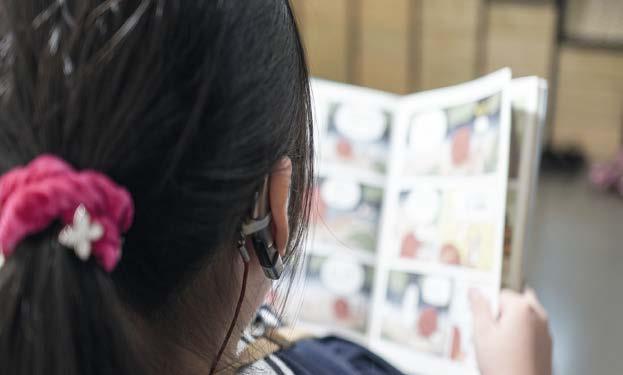




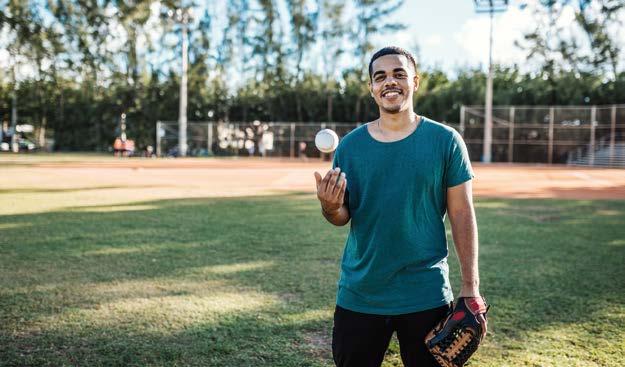






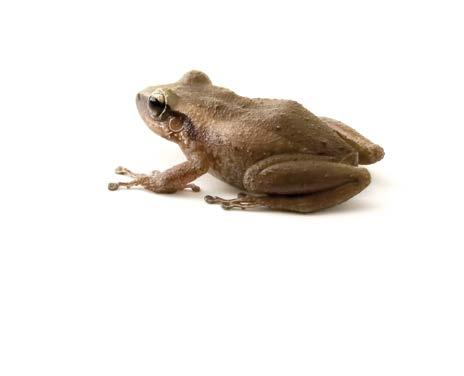

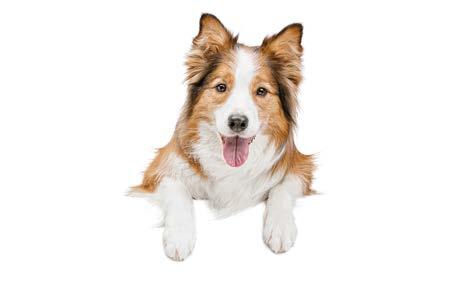
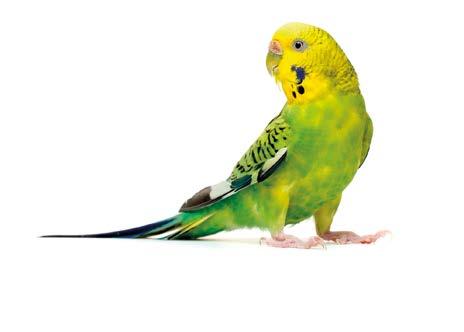


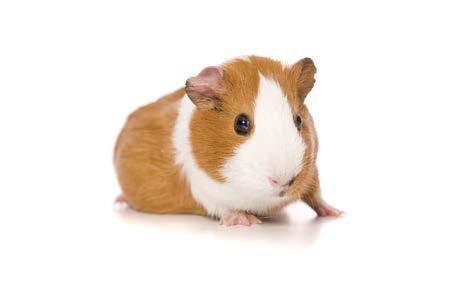
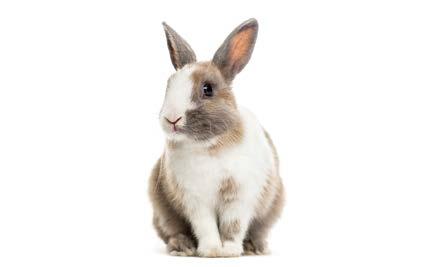
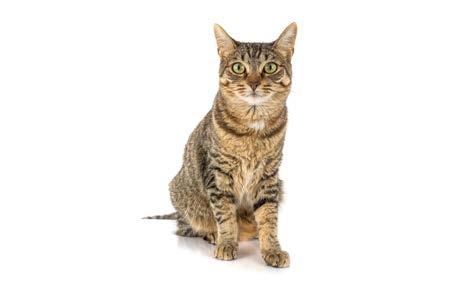
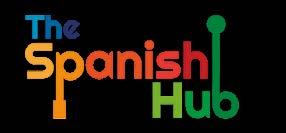

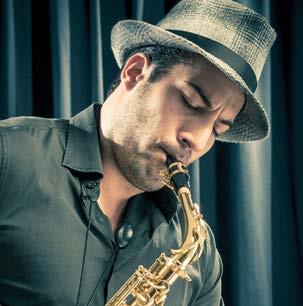


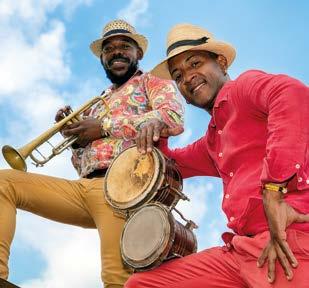
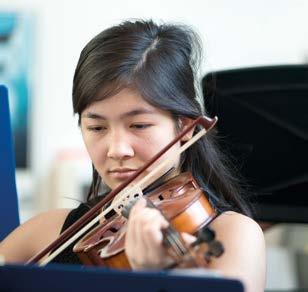


dependi
a word has more than one syllable,


stressed syllable
inteligente smart
loyal paci
patient
trabajad
perez
hardworking
simp
tranqu
nervi
quiet
vali








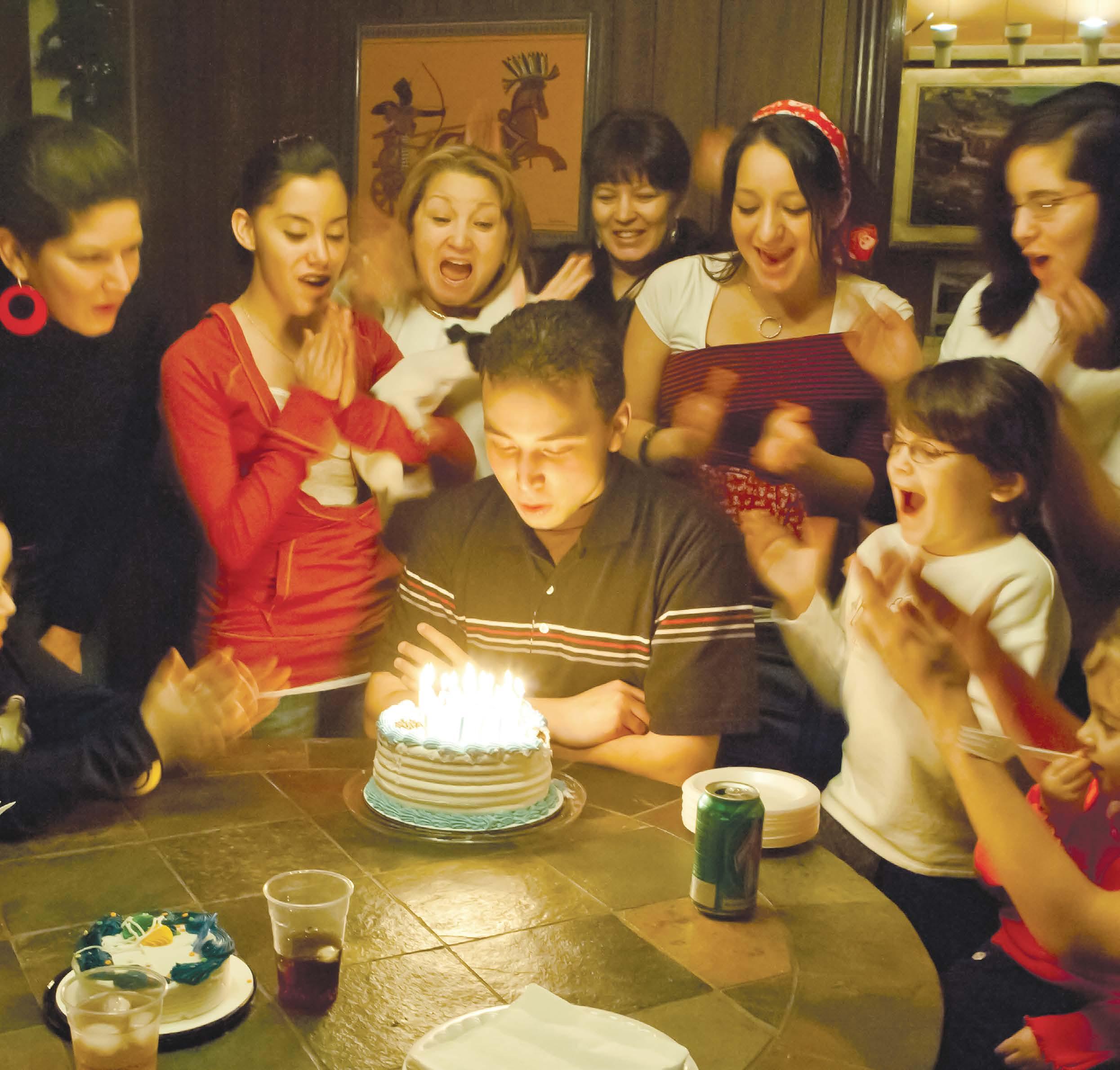
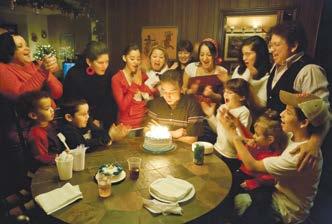

Guada
Guada
Sebastián
muy bonita.
centro

amigo
Guada
I can talk about family members and people close to me.
A. Read these sentences about Sebastián’s family. Complete his family tree.
1. Natalia es la mamá de Sebastián, Sofía y Jayden.
2. Sofía es la hermana de Jayden y Sebastián.

3. Natalia es la hija de Elena y José Antonio.
Elena es la abuela de Sebastián, Sofía y Jayden.
Jayden es el nieto de María Fernanda y Roberto.

Pedro es el exesposo de Natalia.
B. Read the following sentences.
La mamá de Sofía


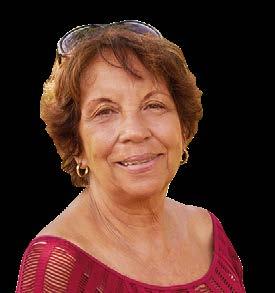
Is the word order the same in English and Spanish? What Spanish word corresponds to ’s?



POSSESSION WITH DE
El papá de Sebastián. El amigo de Sofía. La mascota de Jayden.
GRAMÁTICA p. 108
LA FAMILIA (1)
los papás = los padres: el papá + la mamá = el padre + la madre
los hijos: el hijo + la hija
los hermanos: el hermano + la hermana
los abuelos: el abuelo + la abuela los nietos: el nieto + la nieta los esposos: el esposo + la esposa los exesposos: el exesposo + la exesposa
VOCABULARIO p. 110
La familia es muy importante en Puerto Rico y, en general, en Latinoamérica. La familia es importante para ayudar (help), tomar decisiones y celebrar. Son familia los papás y los hermanos, pero también la familia extensa y los amigos cercanos (close friends).

Is the concept of family similar in your country?
A. Read Sebastián’s blog post. Complete this definition of mi círculo.
“Mi círculo” es una representación de...
Hoy en la escuela hablamos de un tema interesante: “Mi círculo”. La idea es escribir tu nombre en un círculo pequeño, en el centro. En un círculo más grande escribes el nombre de las personas más importantes para ti: amigos, profesores… Este es mi círculo:
SOFÍAMAMÁ ENTRENADOR CUEVAS JAYDEN JOSÉ YO LUIS
Mi mamá es una persona esencial en mi vida. Es cariñosa, inteligente y trabajadora.
Mi padrino José es como un papá para mí. Ayuda mucho a mi familia. Es muy bueno, trabajador y divertido.
Mis hermanos son también muy importantes para mí. Sofía escucha siempre y es muy inteligente. Aprendo mucho de ella. ¡Mi hermano Jayden es divertido y cariñoso! Luis es mi mejor amigo. Me gusta cómo es: creativo, con ideas increíbles y muy independiente.
El entrenador Cuevas es mi entrenador de béisbol. Es trabajador, valiente y muy positivo. Es un ejemplo para mí.
mi hermano / hermana mis hermanos / hermanas tu hermano / hermana tus hermanos
B. ¿Cómo son las personas del círculo de Sebastián? Describe their personalities. La mamá de Sebastián es...
C. Identify and describe two people from your inner circle. Mi…
cariñoso / cariñosa loving creativo / creativa divertido / divertida fun independiente inteligente positivo / positiva trabajad
Los padrinos y las madrinas tienen un rol importante en las familias de Puerto Rico. Son como “segundos” (second) papás. Están muy presentes en la vida de las personas, especialmente durante celebraciones como el cumpleaños, la graduación, etc.

Does
role of godparent
culture?
responsabilities?
in
I can ask and give information about family relationships.
4
A. Read the article.
Answer the questions below.
René Pérez Joglar (1976) es un cantante y compositor puertorriqueño de música urbana. René tiene una familia con talento.
Su mamá, Flor Joglar, es actriz y su papá, Reinaldo Pérez, es músico y escritor.
Su media hermana, Ileana Cabra Joglar, es cantante y compositora. Es hija de la mamá de René y de su esposo, padrastro de René.
Su hermanastro, Eduardo Cabra Martínez, también es compositor y toca muchos instrumentos. Es hijo del padrastro de René y otra mujer.
De 2005 a 2014, los tres forman Calle 13, una banda famosa internacionalmente. René es una persona comprometida: colabora con Unicef y Amnistía Internacional.
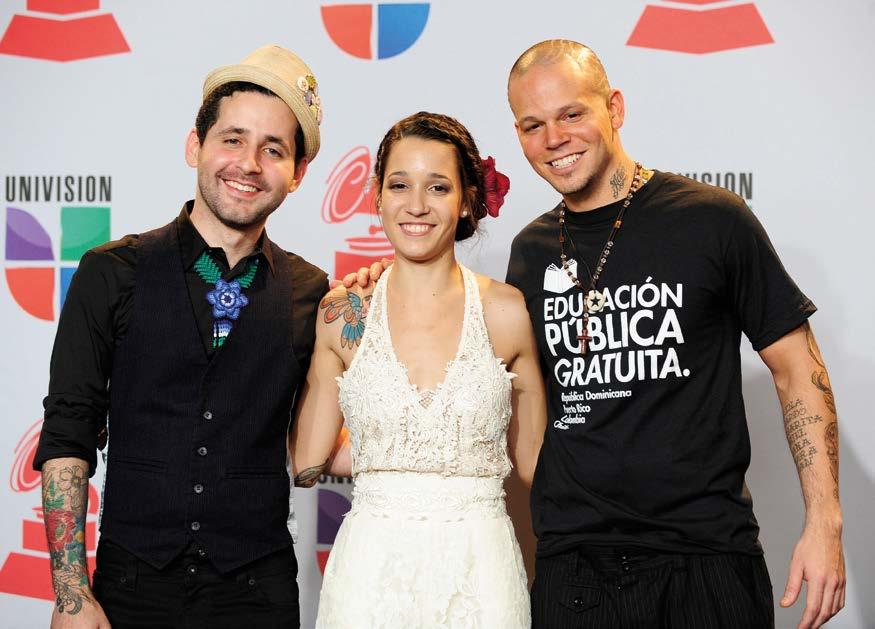
Eduardo, Ileana
1. ¿De dónde es René Pérez?
2. ¿Qué tipo de música canta?
3. ¿Por qué tiene una familia con talento?
4. ¿Qué crees que significa la palabra “comprometido”?
B. Draw the family tree de la familia Pérez Joglar.
C. Read these sentences about the Pérez Joglar family.
What words do you use in English for the words in bold?
René es cantante y compositor. Su mamá es actriz y su papá es músico y escritor. Sus hermanos son Ileana y Eduardo.
Ileana es cantante y compositora. Su banda es Calle 13. Sus hermanos son René y Eduardo.
D. Rewrite the sentences in the first person (yo).
What words do you need to change?
LA FAMILIA (3) el padrastro, la madrastra stepfather, stepmother el medio hermano, la media hermana half brother, half sister el hermanastro, la herman
stepbrother, stepsister
6
1. In pairs, write all the family relationships you know in Spanish on different note cards.
2. Student A gets a card and holds it to his / her forehead.
3. Student B describes the person on the card.
4. Student A guesses who the person is.
La hermana de tu madre.
Choose a famous person or a person you admire.
Research his or her family.
Write a brief description of the family.
Millie Bobby Brown es una actriz inglesa.
Su mamá se llama…
En los países de habla hispana, las personas tienen dos apellidos: normalmente, el primero1 es el primer apellido del papá y el segundo2, el primer apellido de la mamá.
Hoy en día, en muchos países, las familias deciden el orden de los apellidos. Cuando se casan3 , las mujeres4 no usan el apellido de su esposo.
1 the first
the
(they)
Espécimen
Use the note cards as learning flash cards. Write the English word on the other side of the card.
LA FAMILIA
male
nephew,
A. Read the text and look at the driver’s license. What is Juana’s father’s family name?
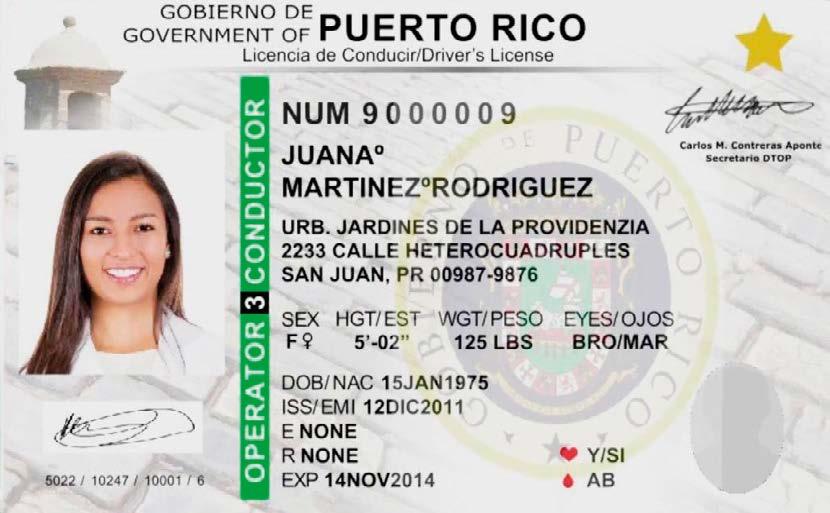
What is her mother’s family name? Explain why Juana has two different family names.
B. COMPARACIÓN CULTURAL How do family names work in your country? Are there any set rules?


Tiene el pelo largo y negro. Tiene los ojos negros y la nariz grande. Lleva barba.
Tiene el pelo corto y blanco.
Tiene los ojos negros. Lleva lentes y bigote.
Rican
Tiene el pelo largo, castaño y liso. Tiene las manos grandes.
En Puerto Rico el arte callejero (street art) es muy importante. Existen festivales prestigiosos como «Humacao Grita», en la costa este de Puerto Rico, «Santurce Es Ley», en San Juan, y «Yaucromatic», en Yauco.
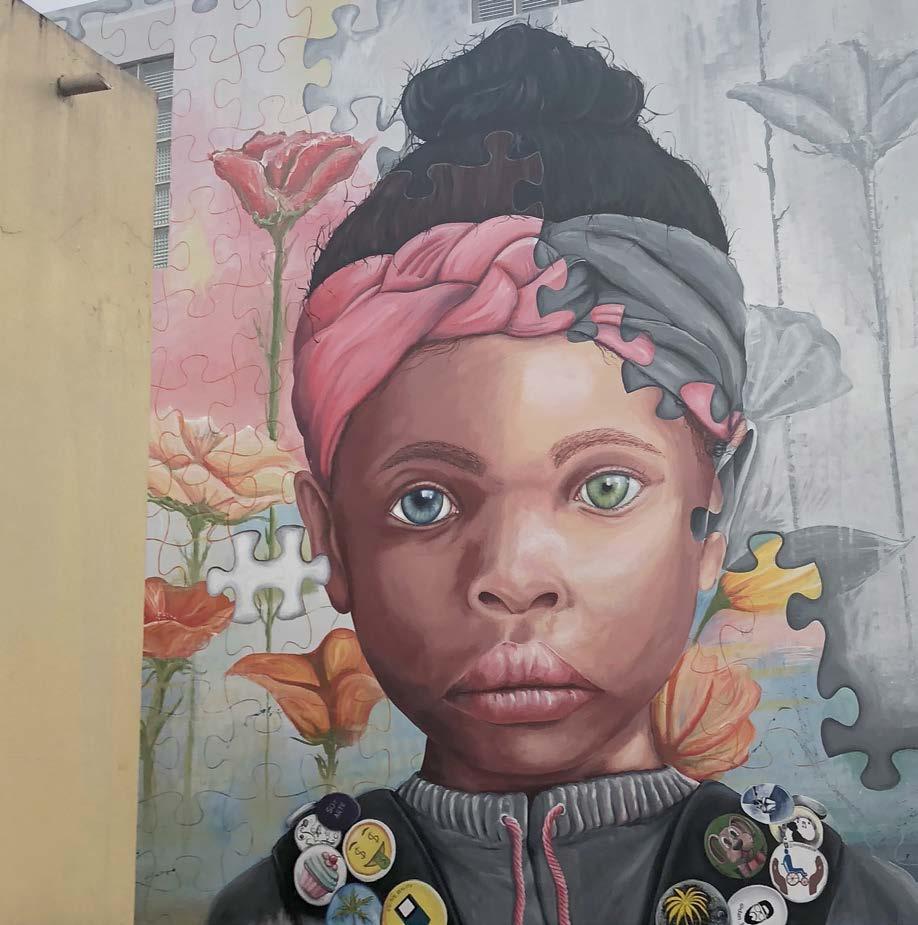



Is street art considered an art in your country? Is it similar to the street art in Puerto Rico?
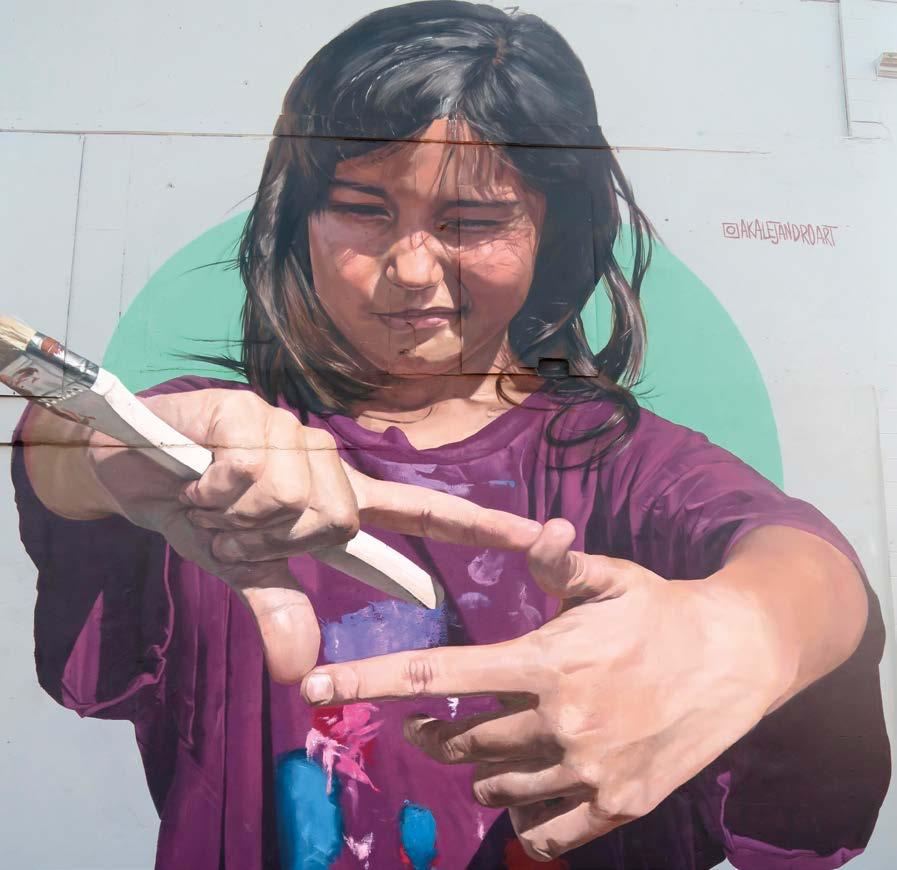






PERFIL DE ÉL ¿Eres un muchacho?
el pelo castaño y corto?
los ojos marrones?
PERFIL DE ELLA ¿Eres una muchacha?
¿Tienes el pelo negro, largo y rizado?
¿Tienes los ojos azules?
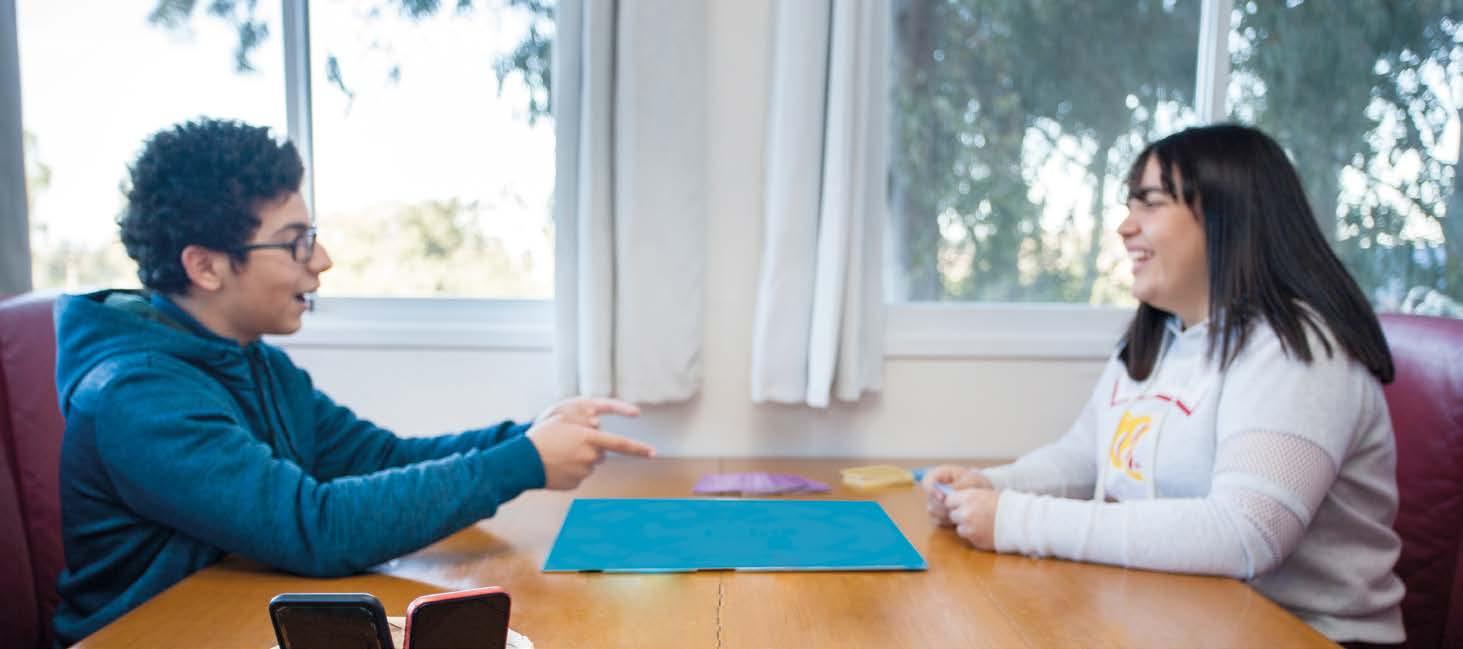
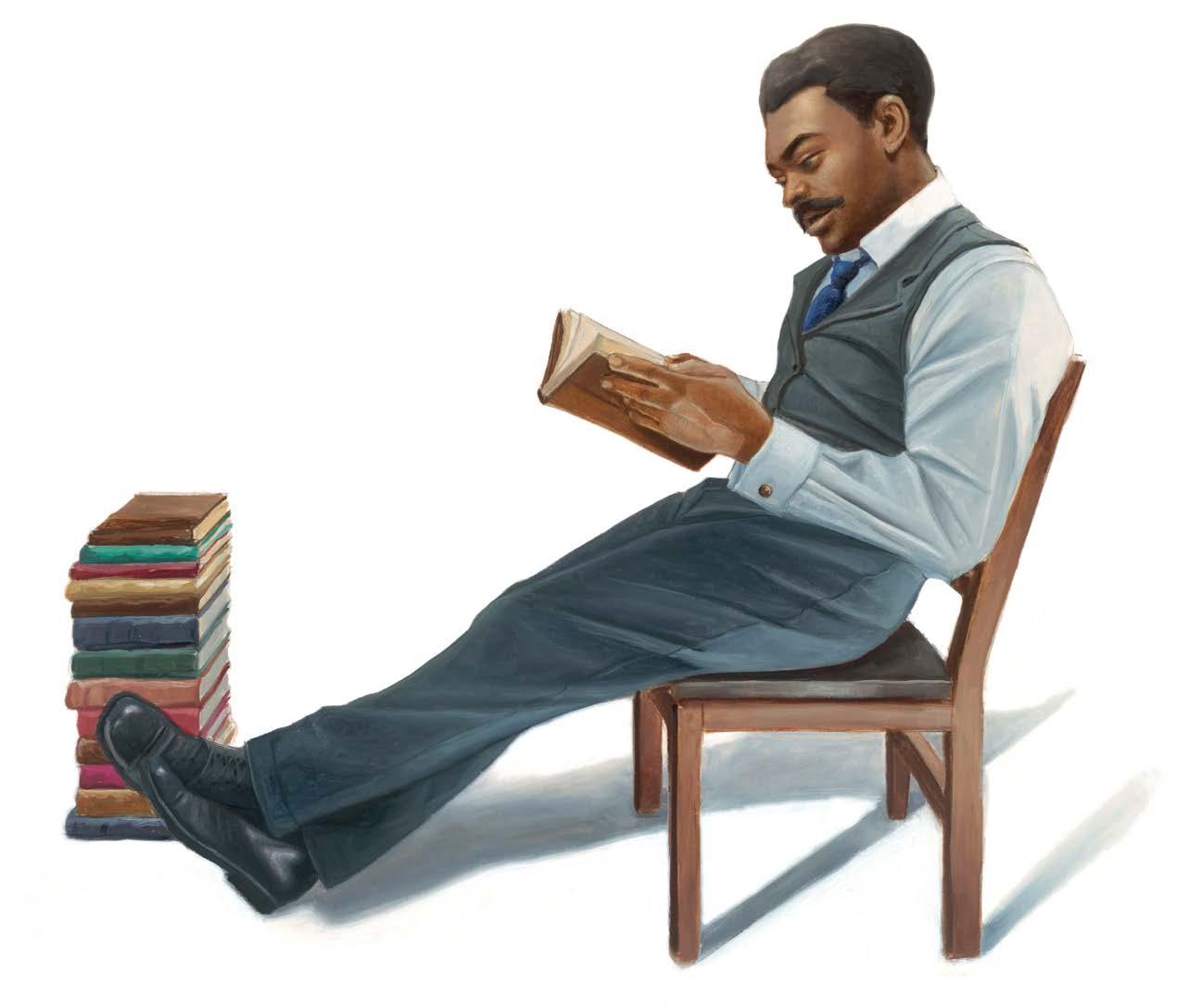 por Sebastián Martínez, reportero de Puerto Rico.
por Sebastián Martínez, reportero de Puerto Rico.
Es un intelectual importante de Puerto Rico. Nace en Santurce en 1874. Es de origen africano y alemán.
Es una persona muy inteligente. Le gusta mucho leer y también le gusta mucho la historia.
En el colegio quiere1 aprender historia afrolatina, pero una profesora le dice2 que los afrolatinos no son importantes en la historia de Puerto Rico. Schomburg dedica su vida a probar3 que su profesora no tiene razón4 .
Read the article and these sentences. Say if they are correctas or incorrectas. Correct the wrong ones.
1. Arturo Schomburg es afrolatino.
2. Le gusta mucho la historia.
3. Cree que los afrolatinos no tienen historia.

What does he do in New York?
What is el Renacimiento de Harlem?

1 (he) wants 2 (she) tells him 3 to prove 4 (she) is not right
Discuss in pairs and then with the class: Why do you think Arturo Schomburg’s work is important to society?
Can you name two artists from the Harlem Renaissance not mentioned in the text?
Con 17 años Schomburg emigra a Nueva York. Allí colecciona muchos libros, obras de arte y objetos de la historia africana.
Schomburg es un miembro del Renacimiento de Harlem, un movimiento de intelectuales y artistas afroamericanos que expresan su identidad y su cultura en sus obras.
Schomburg investiga y escribe sobre personalida des afrolatinas y afroamericanas, por ejemplo la escritora Phillis Weathley, el pintor José Campeche, el inventor Benjamin Banneker o el líder abolicio nista Frederick Douglass.
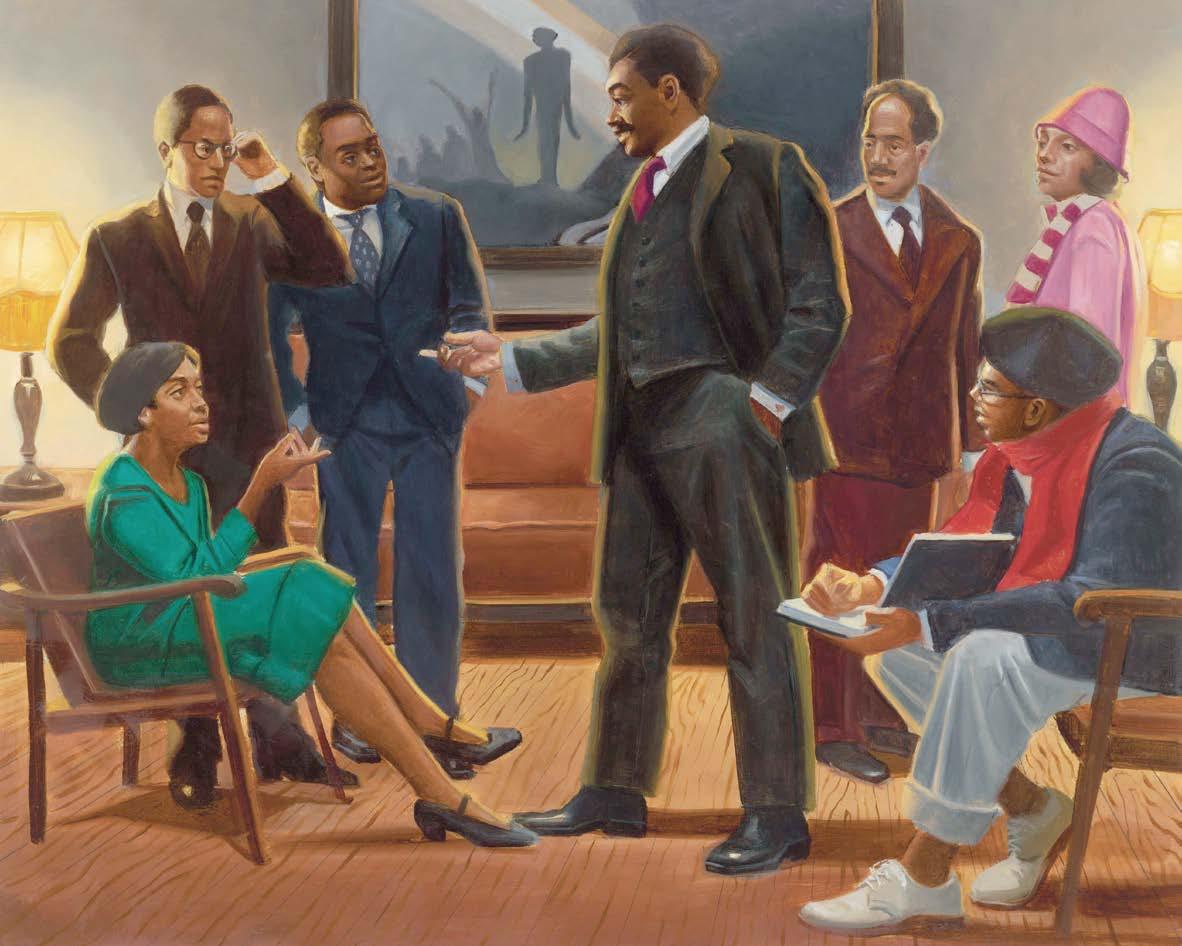
Miembros del Renacimiento de Harlem
Schomburg: The Man Who Built a Library (© 2017). Texto de Carole Boston Weatherford. Ilustraciones de Eric Velasquez. Reproducido con permiso de Candlewick Press.

La colección de Arturo Schomburg es ahora el Centro Schomburg para la Investigación de la Cultura Afroamericana. Está en Nueva York.
Centro Schomburg, en Harlem (Nueva York)

1. Search online for one of the following afrolatinos from Puerto Rico: José Celso Barbosa, Sylvia del Villard, Julia de Burgos, or Piri Thomas.
2. Write a short article. Include a picture and the following information: nombre, lugar y fecha de nacimiento, ocupación, personalidad y contribución a la sociedad
You can already write a short article with your level of Spanish! Make headings from the information in step 2 (occupation, personality, etc.). Write one or two sen tences under each heading.

• You can express possession and relationships with the preposition de.
Esta es la familia de Sebastián. This is Sebastián’s family
• Possessive adjectives tell you who owns something or describe relationships between people and things. Nuestra hermana vive en San Juan. Our sister lives in San Juan.
possessive adjective possessive adjective
FEMININE mi tío my mi tía my mis tíos my mis tías my tu tío your (fam.) tu tía your (fam.) tus tíos your (fam.) tus tías your (fam.) su tío his / her / its / your (formal) su tía his / her / its / your (formal)
sus tíos his / her / its / your (formal)
sus tías his / her / its / your (formal) nuestro tío our nuestra tía our nuestros tíos our nuestras tías our vuestro tío your vuestra tía your vuestros tíos your vuestras tías your su tío their, your (formal) su tía their, your (formal) sus tíos their, your (formal) sus tías their, your (formal)
• They agree in number (singular or plural) with the nouns they describe. Mi primo lleva lentes. Mis primos llevan lentes.
search In English, do possessive adjectives agree in number with the noun they describe?singular plural
• Nuestro/a and vuestro/a also agree in gender (masculine or feminine) with the nouns they describe. Nuestro tío es muy simpático.
Nuestra tía es muy simpática.
masculine feminine
19

a. I’m talking about me. Mi gata se llama Peluche y ... perro, Patitas.
b. I’m talking about Francisco. ojos son azules.
c. I’m talking about my classmates and me. profesora es mexicana.
d. I’m asking your sister and you. ¿Cómo se llama ... abuelo?
e. I’m asking you (one person, formal). ¿Cómo se llama ... mamá?
f. I’m talking about Olga. hermano es rubio.
Rewrite the sentences using a possessive adjective. Then, translate them into English.

a. Carlos tiene un hermano.
Es su hermano. / He is his brother.
b. Carolina tiene un hermano.
c. Yo tengo una prima. d. Yo tengo cinco primos.
e. Sergio y Antonio tienen un perro.
Read the information about Raúl’s family. Find all six possessive adjectives. Complete the family tree.
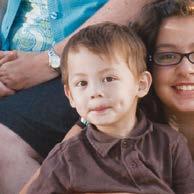




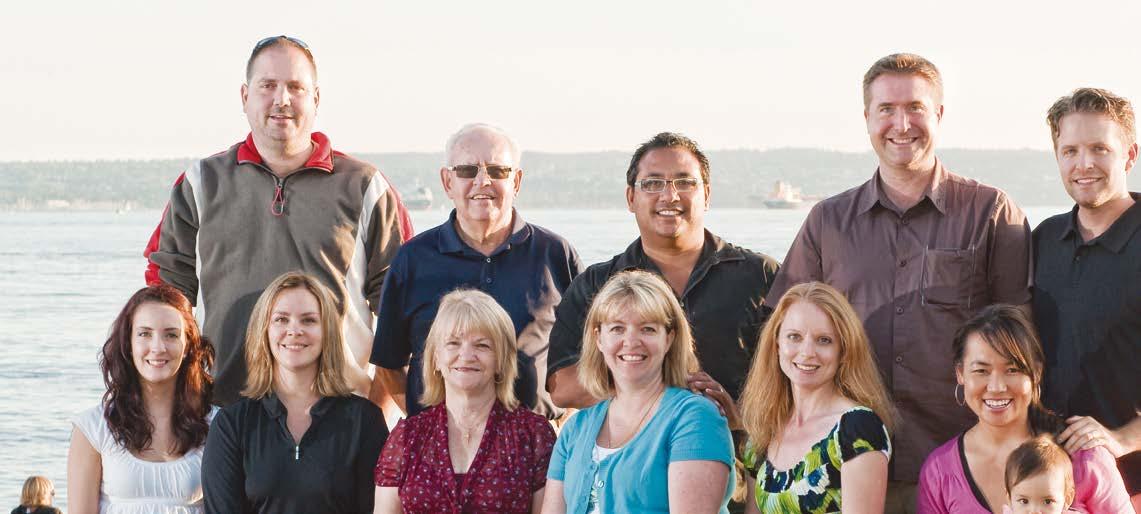
Yo me llamo Raúl. Tengo dos hermanos: Juan y Rosi. Nuestros papás se llaman Felipe y Antonia.
Mi hermano Juan está casado (he is married) con Belén y tienen dos hijas. Sus hijas se llaman Lidia y Leticia. Mi sobrina Lidia tiene diez años y Leticia, dos.

Mis hijos se llaman Ari y Pablo.
f. Susana y Natalia tienen un perro.
g. Mi esposa y yo tenemos una mascota.
h. Mi esposa y yo tenemos un gato. i. Mis papás tienen dos pájaros.
Look at Raúl’s family tree. Say how these people are related to him using de.
a. Antonia Es la mamá de Raúl. b. Felipe c. Juan d. Rosi e. Lidia y Leticia f. Ari y Pablo

CARLA
los esposos spouses el esposo husband la esposa wife
mi abuelami abuelo
mi tío yo
mi papá mi mamá mi hermano/a mi primo/a
mi tía
los papás = los padres parents el papá = el padre father la mamá = la madre mother
los hijos children el hijo son la hija daughter
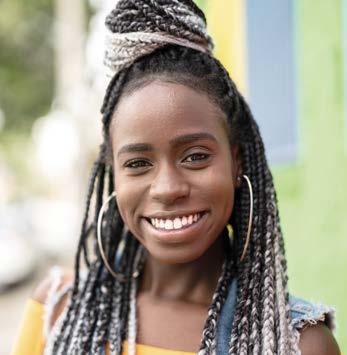
los hermanos siblings el hermano brother la hermana sister
los abuelos grandparents el abuelo grandfather la abuela grandmother
los nietos grandchildren el nieto grandson la nieta granddaughter
los tíos uncles and aunts el tío uncle la tía aunt
los primos cousins el primo cousin la prima cousin
los sobrinos nephews and nieces el sobrino nephew la sobrina niece
los padrinos godparents el padrino godfather la madrina godmother
los exesposos ex-spouses el exesposo ex-husband la exesposa ex-wife
los padrastros stepparents el padrastro stepfather la madrastra stepmother
los medio hermanos half-siblings el medio hermano half brother la medio hermana half sister

la cabeza head
los ojos eyes
el pelo hair
las orejas ears
la nariz nose la cara face
la boca mouth
las manos hands
• Some words in Spanish have an accent mark. The accent mark indicates the stressed syllable. Accents marks are only placed on a vowel. pa-pá tí-mi-do/a tam-bién mú-si-ca

• The accent mark can be used to distinguish words that are spelled alike but have different meanings.
the question words have an accent mark
Spanish.
All these words have an accent mark. Listen to them and write the missing accent marks.
simpatico
tio
cancion e. adios
pajaro
mama
For novice students, it is not essential to learn all the rules for the written accent; however, pay attention to the accent marks because they change the pronunciation of that word, and sometimes its meaning.



you start designing, take time to think about where best to place the elements, what colors to use, etc.
sure that the


legible from
DIGITAL
a presentation in a digital program where you can pan and zoom on the different descriptions about your inner circle.









Pepito es un cómic sobre la familia puertorriqueña y una variedad de temas como la política y los problemas sociales de Puerto Rico.
Pepito es un muchacho curioso de siete años. Vive con su mamá, su papá y su abuela. Tiene dos mascotas, Chupi y Thomas. Le gustan mucho los mantecados1 y su artista favorito es Daddy Yankee.
Mamá es el pilar de la casa y papá usualmente es la víctima de los problemas del país. Tata es la abuela de Pepito y mamá de su mamá. Es una mujer fuerte.
Mofin es un amigo de Pepito. Le gustan mucho la tecnología y la piña2
Yelitza es una amiga de Pepito. Es una niña muy inteligente y su interés principal es el rol de las mujeres en la sociedad.
¿Cuántos años tiene Pepito?
¿Cuántas personas viven con Pepito?
¿Quiénes son Chupi y Thomas?
¿Qué estilo de música le gusta a Pepito?
¿Cómo es su abuela?
¿Qué le gusta a su amigo Mofin?
¿Quién es Yelitza? ¿Cómo es?
vive
¿Cuántos
¿Quién es muy
¿A quién le gusta
¿Quién
¿Quiénes

¿Quién tiene
You collaborate with a pop culture online magazine. This month's topic is about superheroes. Choose a superhero you like. Write about him or her, including the following information:
• ¿Cómo se llama?
• ¿Cómo es su personalidad? ¿Cómo es físicamente?
• ¿Qué le gusta?
Your school participates in a virtual exchange with a partner school in Puerto Rico. You exchange videos with the other students. This week, the topic is: la mascota ideal. Record a video including the following information:
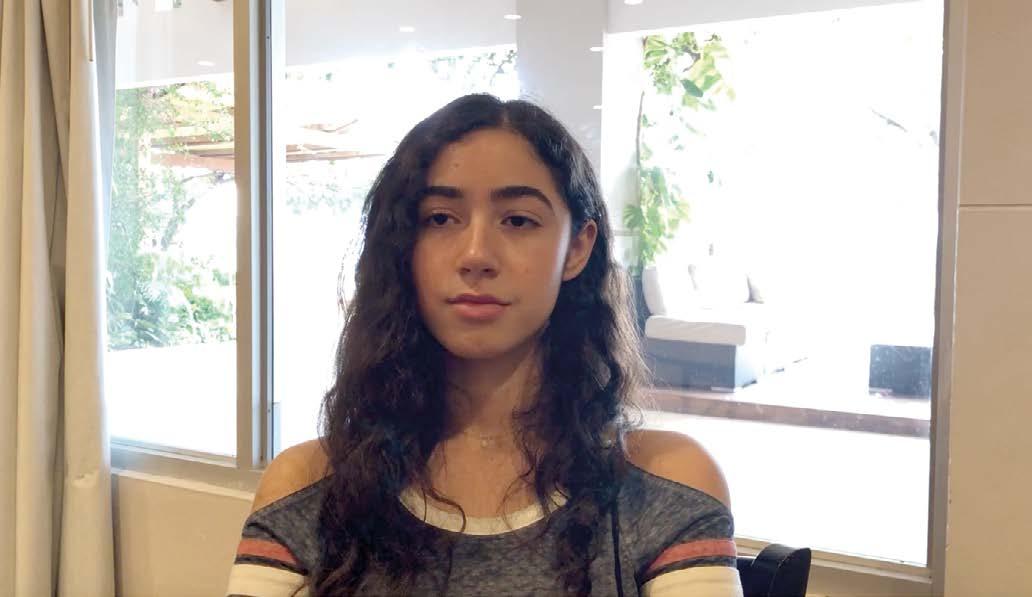
• ¿Cuál es la mascota ideal para ti?
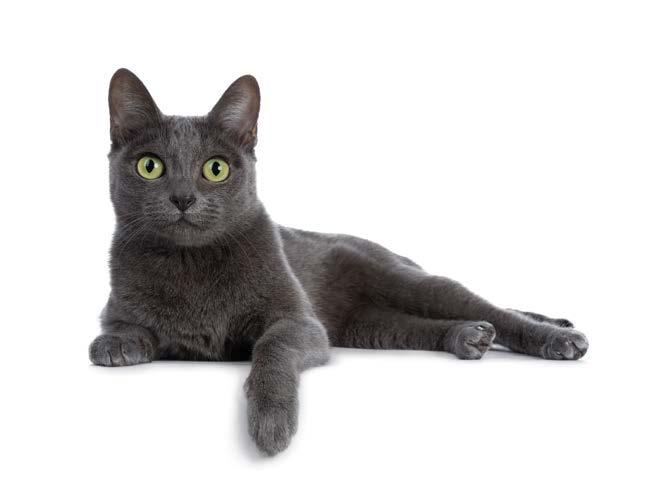
• ¿Cómo es su personalidad?
¿Qué le gusta y qué no?
SE DICE…
bien = muy
Es bien cariñosa. = Es muy cariñosa.
When you write a paragraph, focus on giving the information you are asked to give. Write it one sentence at a time using what you have learned.
Rehearse before speaking Practice before doing the presentation.
clearer your pronunciation is, the better the other person will understand you.
A. Read a message that an English teacher posted on a Puerto Rican online forum.
Hola a todos. Soy profesora de inglés en Puerto Rico y mis estudiantes tienen una unidad sobre los Estados Unidos. Hablamos de actividades que las personas hacen en su tiempo libre y comparamos qué hacen los jóvenes de Puerto Rico y de EE. UU. ¡Necesitamos información! ¿Qué les gusta hacer en su tiempo libre? ¿Qué música les gusta? ¿Qué artistas son populares en su país?
GRAMÁTICA pp. 88-90, 108
VOCABULARIO pp. 92-93
Use linking words like y, pero, and porque to link your sentences. They will make your writing more freeflowing.
A. You are participating in a Spanish club. Today, the topic is families and pets. In pairs, interview each other, including the following information:


How many people are there in your family?
Who are they?
Who is your favorite family member?
What is your favorite pet?
Why do you like it?
GRAMÁTICA pp. 88-90, 108 VOCABULARIO pp. 93-94, 110
If you don’t understand something, ask for clarification using: No entiendo…, ¿Puedes repetir, por favor?, or ¿Qué significa…? This is an important skill for interactive communication. Your teacher will assess that you used them properly.
Choose one of the following topics.
Complete the chart below with information from this unit.
Write three to four sentences to compare both cultures.
1. La música en Puerto Rico y la música en tu país.
2. El concepto de familia en Puerto Rico y en tu país.
3. El arte urbano en Puerto Rico y en tu país.
IN PUERTO RICO
Use resources to compare
Write or say simple sentences about each culture. Use words such as y, pero, sí, no, también, and tampoco, and phrases such as es similar a and es diferente a to connect and compare them.


Choose one of the following topics.
Complete the chart below with information from this unit. Record an audio track or a video to compare both cultures.
1. Los deportes en Puerto Rico y en tu país.
2. Personajes de ficción de Puerto Rico y de tu país.
3. Los pueblos nativos de Puerto Rico y de tu país.
IN PUERTO RICO